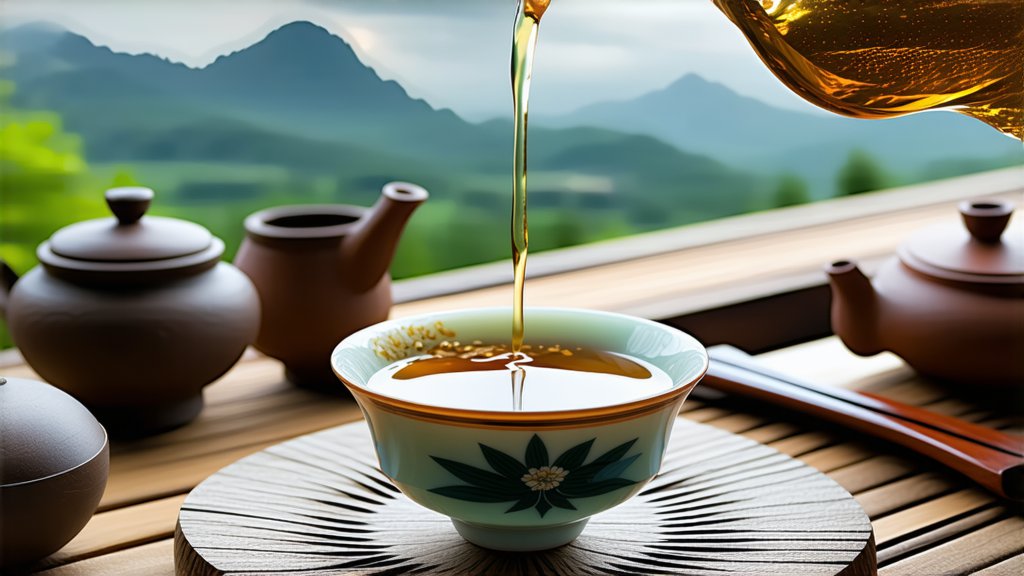
In the vast and diverse landscape of Chinese tea culture, few varieties capture the imagination quite like Junshan Yinzhen, a distinguished member of the lesser-known yet profoundly unique category of yellow teas. This article embarks on a journey to uncover the enigmatic allure of Junshan Yinzhen, delving into its storied past, exploring the nuances of its various types, unraveling the intricate art of its production, and offering an insightful guide to savoring this golden elixir.
A Glimpse into History
Junshan Yinzhen, often hailed as the "King of Yellow Tea," traces its roots back to the Tang Dynasty (618-907 AD), a period marked by significant cultural and artistic flourishing in China. Its name, translating to "Junshan Silver Needle," pays homage to its origin - the pristine mountains of Junshan, located in Hunan Province. Legend has it that this tea was first discovered by a local herbalist who stumbled upon its unique properties while foraging for medicinal herbs. Over centuries, Junshan Yinzhen evolved from a humble herbal remedy to a revered beverage enjoyed by emperors and commoners alike, symbolizing purity, health, and longevity.
The Symphony of Varieties
While Junshan Yinzhen stands as the flagship of Chinese yellow teas, it is not alone in its category. Other notable varieties include Moo Shui Huang Ya (Mother Tree Yellow Buds) and Houhuo Huang Ya (Flame-Roasted Yellow Tea), each with its distinct characteristics yet sharing the common thread of meticulous craftsmanship and subtle transformation through controlled oxidation. These teas vary slightly in their flavor profiles, aroma intensity, and visual appeal, offering a delightful spectrum for connoisseurs to explore.
The Art of Crafting Junshan Yinzhen
The creation of Junshan Yinzhen is a testament to the artisan's patience and precision. The process begins with the careful selection of tender buds and young leaves from specific tea bushes, typically those grown at high altitudes where cooler temperatures slow down growth, enhancing flavor concentration.
-
Withering: Freshly picked leaves are spread thinly on bamboo trays and left to wither under mild sunlight or in well-ventilated rooms. This step initiates slight oxidation and reduces moisture content.
-
Fixation: Unlike green teas, which undergo high-heat fixation, Junshan Yinzhen is gently pan-fried or baked at lower temperatures to halt enzyme activity partially, allowing for further controlled oxidation.
-
Wrapping and Steaming: The hallmark of Junshan Yinzhen lies in its unique wrapping process. Each bud is meticulously enveloped in locally sourced bamboo leaves and then steamed lightly. This enveloping not only imparts a subtle bamboo fragrance but also facilitates uniform oxidation, giving the tea its characteristic yellow hue.
-
Drying: Finally, the wrapped tea is slowly dried, either in the sun or using specialized equipment, ensuring a delicate balance between moisture retention and preservation of the tea's inherent qualities.
A Symphony for the Senses: Tasting Junshan Yinzhen
To truly appreciate Junshan Yinzhen, one must engage in a mindful tasting ritual that respects its complexity and elegance.
-
Preparation: Use water just off the boil (around 80-85°C) to avoid scalding the delicate leaves. A glass teapot or a clear Gaiwan allows for观赏 (guan chang) – the appreciation of the tea's unfurling dance.
-
Infusion: Add approximately 3 grams of Junshan Yinzhen per 150ml of water. The first infusion serves to 'wake' the leaves, with subsequent infusions revealing deeper layers of flavor.
-
Aroma & Appearance: Before sipping, inhale deeply to capture the tea's subtle floral and fruity notes, mingled with a hint of sweet hay. Observe the bright golden liquor, a testament to the tea's gentle oxidation process.
-
Tasting: Take small sips, allowing the tea to coat your palate fully. Note the initial sweetness, followed by a silky texture and a lingering aftertaste that combines notes of honey, melon, and a whisper of spice.
-
Multiple Infusions: Junshan Yinzhen gracefully lends itself to multiple infusions, each revealing new dimensions of its character. Adjust steeping times progressively longer to explore its full potential.
In conclusion, Junshan Yinzhen is more than just a tea; it is an experience that transcends time and place, inviting drinkers into a world where nature's bounty meets human ingenuity. As you raise your cup to this golden nectar, remember that every sip carries with it centuries of tradition, the skillful hands of artisans, and the serene beauty of the mountains from which it originates. Embrace the journey, for in the realm of yellow tea, Junshan Yinzhen reigns supreme.